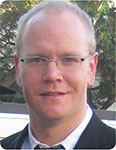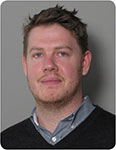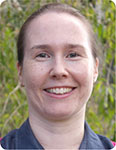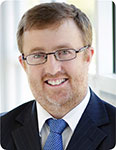A rapid and flexible method for simulation of CSG water production: application in the Surat and Bowen basins
Roald Strand A , Greg Keir B C D , Lucy Reading B C D , Brent Usher A and Chris Dickinson AA Klohn Crippen Berger
B Centre for Water in the Minerals Industry
C Sustainable Minerals Institute
D UQ
The APPEA Journal 54(1) 135-146 https://doi.org/10.1071/AJ13015
Published: 2014
Abstract
There is significant interest in estimating volumes of water extracted during production as the CSG industry develops in the Surat and Bowen basins in Queensland, Australia. Klohn Crippen Berger Ltd (KCB) was commissioned by the Queensland Department of Natural Resources and Mines (DNRM) to develop a tool to estimate where, when, and how much CSG water will be produced in these areas under various industry expansion scenarios. The tool, which is now being maintained and further developed to interface with GIS software by the Centre for Water in the Minerals Industry (CWiMI), was built to balance numerical complexity against relative flexibility and simulation speed. This was achieved by an approach that differs from conventional reservoir engineering models, including:
the use of non-equilibrium groundwater flow equations (the Theis equation) in conjunction with semi-empirical type-curve based methods;
calculation of well interference effects and corresponding spatial scaling effects in a relatively large-scale spatially discretised model; and,
modification of flows predicted using the Theis equation to reflect the dual-phase nature of CSG extraction, and the unique hydrogeological setting of the eastern margin of the Surat Basin.
The tool was verified against equivalent Theis equation calculations and type curves provided by CSG proponents. The tool was demonstrated to adequately represent the unique physical mechanisms of CSG extraction, and produce robust estimates of CSG water production at a regional scale, while not relying on excessively complex numerical models or excessive data input requirements.

Roald Strand graduated from the University of British Columbia in 2007 and joined Klohn Crippen Berger (KCB) the same year. Roald’s background is primarily applied low-temperature aqueous geochemistry paired with water flow systems (groundwater, vadose, and surface flow). Roald has developed models for many of these aspects and is part of a small group of GoldSim modellers at KCB who are driving the technological advancement of inclusion of geochemistry in water balance and water quality models. Roald built the Antamina Integrated Water Balance and Water Quality Model, which won the Gold award for Water Management Systems with Consult Australia in 2010. He has authored and co-authored seven publications. RStrand@klohn.com |

Greg Keir is a Postdoctoral Research Fellow at the Centre for Water in the Minerals Industry within the Sustainable Minerals Institute at The University of Queensland (UQ). He has a background in water resources engineering, and a PhD in computational fluid dynamics modelling of membrane filtration processes. Greg’s research interests include catchment hydrology and hydraulics, spatial and stochastic modelling, and modelling of water management practices in extractive industries. His recent work has focused on the use of geostatistical estimation techniques for quantifying groundwater abstraction in sparsely metered areas. g.keir1@uq.edu.au |

Lucy Reading is a groundwater scientist who has experience in groundwater and unsaturated zone modelling, soil and groundwater chemistry, and environmental regulation of the CSG industry. Before commencing in a research role within the Centre for Water in the Minerals Industry, she completed a PhD in the School of Environmental Engineering at UQ and worked within the Water Assessment and Environmental Regulation sections of the Queensland Government. A key theme of her PhD research was the interactions between chemical and hydraulic properties. Lucy is presently applying her expertise in geochemical interpretation and numerical modelling to a number of research projects funded by the Centre for Coal Seam Gas. l.reading@uq.edu.au |

Brent Usher completed his PhD at the University of the Free State in South Africa in 2003. He joined KCB in 2009 after 11 years as a senior researcher at the Institute for Groundwater Studies in South Africa. Brent has 17 years of experience focusing on acid rock drainage and metal leaching (ARD/ML) prediction and management, aqueous geochemistry, hydrogeochemical modelling and contaminant hydrogeology. In addition, Brent’s experience spans throughout projects in Australia, Canada, Peru, South Africa, Papua New Guinea, Fiji and the Philippines. Brent has co authored 15 peer-reviewed scientific papers in journals and books, co-edited a book collection of peer-reviewed papers, and produced more than 40 conference outputs at international conferences. Brent was also the technical lead for the Consult Australia Water Award 2010. BUsher@klohn.com |

Chris Dickinson, RPGeo (Australian Institute of Geoscientists Registered Professional Geoscientist), graduated from the University of Ballarat in 1992 as a geologist, and worked initially in exploration for oil and gas, and gold projects in WA, SA and Queensland. In 1996, Chris returned to university to gain Honours in Hydrogeology. Since then, he has worked as a consulting hydrogeologist across Australia, Asia, the Pacific and Canada, predominantly involved in mining and energy projects. His experience has broadly focused on physical hydrogeology with a strong reliance on geological conceptualisation, and the collection and understanding of monitoring data. Chris has been with KCB for more than 12 years, and now fulfills senior leadership and technical review roles across a range of hydrogeological projects for a variety of clients and a broad range of geological terrains. CDickinson@klohn.com |


